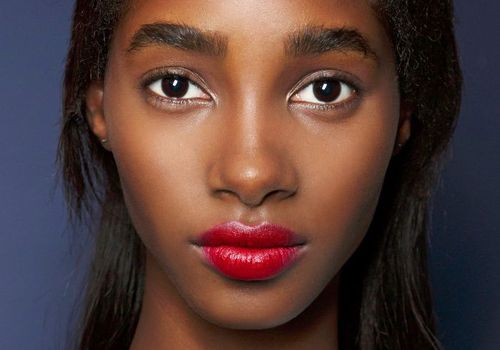Best Lipstick for Every Skin Tone
Home > Beauty and Cosmetics > Best Lipstick for Every Skin Tone
Learn how to choose the lipstick colors that are best for you as well as those to avoid based on your skin tones and undertones.

Almost every woman knows the frustration of picking out what seems to be the perfect shade of lipstick and bringing it home, only to find that it doesn’t look right at all once it’s on her lips. It’s true, most drug stores will let you exchange your purchase, but how do you make sure you pick the right color the second time around? While it may seem that the cosmetics companies are putting some secret ingredient in their products that makes them change colors, the truth is far simpler. The key to finding the perfect shade of lipstick is to simply have an understanding of color, both the colors of your face as well as the colors (pigments) which make up the lipstick. Keeping a few basic tips in mind will save you time, money, and aggravation, and you will be able to pick the perfect shade of lipstick to enhance your natural beauty.
The first important part of choosing the right shade of lipstick is taking a look at yourself in the mirror and deciding which color category you fall into. This is simple to do, since there are only two basic groups: warm and cool. A woman in the “warm” category will have skin that is either brown with golden undertones, pale with peach or honey undertones, freckled, or rosy. In other words, her skin tone will fall into the middle of the color spectrum, neither too dark nor too pale. As a rule, a “warm” woman tans easily. Her eyes may be brown, green, blue, or hazel, often speckled with gold. Her hair will usually be red, strawberry blonde, or highlighted with reds.
On the other hand, women in the “cool” category have skin with either pink tones or no color in the cheeks. They often have pink undertones to their skin, but women with chocolaty brown or olive skin (such as Asian or Latino women) also fall into this category. In other words, “cools” have skin tones on extreme ends of the color spectrum, either very pale or very dark. In general, a “cool” woman’s skin burns easily. Her eyes may be dark brown, nearly black, gray blue, deep blue, or hazel with blue speckling. Her hair will usually be blue-black, medium to dark brown, or blonde.
Once you have decided which category you fall into, it is easy to choose the right colors to compliment your particular skin type. For example, “warms” look best in a variety of earthy tones, such as browns, bronzes, reds (deep or yellowish, not pinkish), and peaches. They should avoid pinkish blues and dull or pale pinks, which can make them look “washed out”, draining all the color from their faces. In contrast, "cools" should wear cooler blue-reds, such as berry, burgundy, maroon, raisin, eggplant, soft rose or pale pinks. These colors create a contrast with the skin tones. “Cools” should steer clear of yellows or oranges.
The next important step to finding the right lipstick is to know what color it really is. Every tube of lipstick is made up of its basic shade (which is what you see and what you assume to be the true color) and color undertones, which may not be visible until you’ve applied the lipstick. The best way to determine what these underlying colors are is to apply a tester lipstick to a piece of white paper. Red or pink undertones can draw out or exaggerate red tones in the skin, and are used to make the color richer and warmer.
Yellow or orange undertones are good for warm skin tones but tend to make “cools” look a bit sickly by bringing out their green undertones. Leaning more towards yellows is better for either skin type, adding a warm and soft touch, whereas orange can look dull. Green or blue undertones in lipstick are added for a more dramatic look but suck the color out of any face. Finally, silver or gray undertones are present in most shimmer lipsticks and can accentuate under-eye circles if they are too blue. Keep an eye out for all of these “invisible” colors before buying to make sure you’re getting the color you have in mind for the look you want.
If all this seems too complicated, or if you’re just in a hurry while shopping, keep the following in mind. The safest shades of lipstick are those closest to your natural lip color. Try not to stray more than a couple shades in either direction. Don’t buy a very dark lipstick if your lips are thin; the deep shade will only accentuate it. If you’re lacking in confidence, visit the cosmetic counter at your local department store and let a trained consultant assist you in finding some shades that might suit you best. Finally, give yourself permission to experiment. After all, almost any color is salvageable since you can always blend colors to make your own personalized favorite shade.
Related Links:
More on Beauty and Cosmetics
